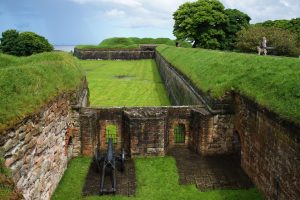
Lancaster Castle
About:
Lancaster Castle rises above the River Lune like a dark sentinel, its centuries-old stone walls steeped in shadow and history. From the outside, it appears more fortress than fairytale, with weathered battlements, arrow-slit windows, and an austere gatehouse that seems to frown upon the modern city sprawling below. The castle’s Norman keep towers with brooding authority, its pitted limestone façade whispering tales of conquest, rebellion, and imprisonment.
Inside the walls, time seems suspended. Cobbled courtyards echo underfoot, flanked by thick stone structures that once served as courtrooms, prison blocks, and execution yards. The air smells faintly of damp stone and iron—remnants of its long life as one of Britain’s most notorious prisons, which remained operational until 2011. Narrow staircases spiral upward into gloom, lit only by slits of daylight filtering through ancient walls.
The Crown Court remains eerily unchanged, where heavy wooden panels and blood-red carpets wrap the chamber in solemnity. It was here, beneath the gaze of carved lions and crests, that the infamous Pendle Witches were tried in 1612—a haunting legacy that lingers like a chill in the stone. The old cells still exist too, claustrophobic and cold, their barred doors and rusted locks relics of human suffering.
Yet amid the weight of its grim past, Lancaster Castle is oddly majestic. Ivy creeps along the parapets, and sunlight sometimes breaks dramatically through leaded windows, scattering warmth onto the ancient flagstones. From the top of the keep, the view stretches across rolling hills and the silver ribbon of the Lune, a sharp contrast to the grim events the castle once contained.
Lancaster Castle is not just a monument—it is a memory carved in stone. Silent yet speaking volumes, it bears the scars of history with unflinching grace.










